Childhood Refugees from Poland and Vietnam: Employment Rates and Incomes
Researchers: Yoko Yoshida1, Jonathan Amoyaw2 and Rachel McLay1
Affiliation: Dalhousie University1 and the University of Saskatchewan2
Keywords: children, youth, refugees, immigrants, family class, economic class, Poland, Vietnam, Canada, economic trajectories, gender, landing category, employment, earnings, IMDB
Go to: Findings, Graphs, Publications
Summary
The economic adaptation of immigrants and their children is vital for successful settlement and well-being in Canada. While the number of research studies examining the economic outcomes of refugees is growing, most tend to focus on the adult population, leaving gaps in our understanding of the economic activities and long-term trajectories of refugee children and youth.
This study aims to shed light on the long-term economic outcomes of refugee children and youth. Using the Longitudinal Immigration Database (IMDB) and focusing on newcomer children and youth from Poland and Vietnam (two major source countries of refugee youth in the 1980s and 90s) this study examines how the economic trajectories of refugee children and youth compare to those of other newcomer children. The study also considers how factors such as gender and source country affect the economic outcomes of refugee children and youth.
Findings
- Differences in landing categories can affect employment rates at various points across the life course for immigrants who arrive in Canada as children. Government-assisted refugees (GARs) may be particularly disadvantaged compared to other groups. Source country and gender also play an important role in the employment outcomes of childhood immigrants and refugees.
- Among Vietnamese immigrants, children of skilled worker immigrants have higher earning trajectories compared to those in the family class and those who arrived as refugees; those who arrived as refugees had the lowest earnings trajectories. Among Polish immigrants, earnings of childhood refugees tended to increase in their 40s, while earnings among children of immigrant parents, as a whole, began to level off in middle age.
- Earnings trajectories among refugees were notably different between the Vietnamese and Polish groups. For Vietnamese refugees, the predicted average earning at 25 years of age was approximately $21,600 for GARs and $23,400 for Privately Sponsored Refugees (PSRs), with the amount gradually increasing to approximately $40,000 for both groups at age 40. Polish refugee children, on the other hand, had higher earnings at 25 years old (about $27,500 for both GARs and PSRs), with the level of earning continuing to increase throughout their 40s, reaching $67,200 for GARs and $73,500 for PSRs.
- Differences in economic outcomes between refugees from Vietnam and Poland may signal the negative effects of racialization processes in Canada. However, these differences could also be accounted for due to differences in socioeconomic backgrounds of refugee families between the two countries, the context of their departure and immigration experiences, and the existence and support of ethnic communities in Canada. Although refugees are admitted on humanitarian grounds, our findings suggest that with the necessary support, they contribute over time to Canada’s economy just like immigrants admitted through other categories.
Graphs
Figures 1 & 2: Employment rates for Vietnamese immigrants by landing category: Men and Women
Figures 3 & 4: Employment rates for Polish immigrants by landing category: Men and Women
Figure 5 & 6: Mean employment incomes for Vietnamese immigrants by landing category: Men and Women
Figure 7 & 8: Mean employment incomes for Polish immigrants by landing category: Men and Women
Figure 9 & 10: Mean employment incomes for Vietnamese and Polish immigrants by landing category
- Fig. 1-2
- Fig. 3-4
- Fig. 5-6
- Fig. 7-8
- Fig. 9-10
Figures 1 & 2: Employment rates for Vietnamese immigrants by landing category: Men and Women
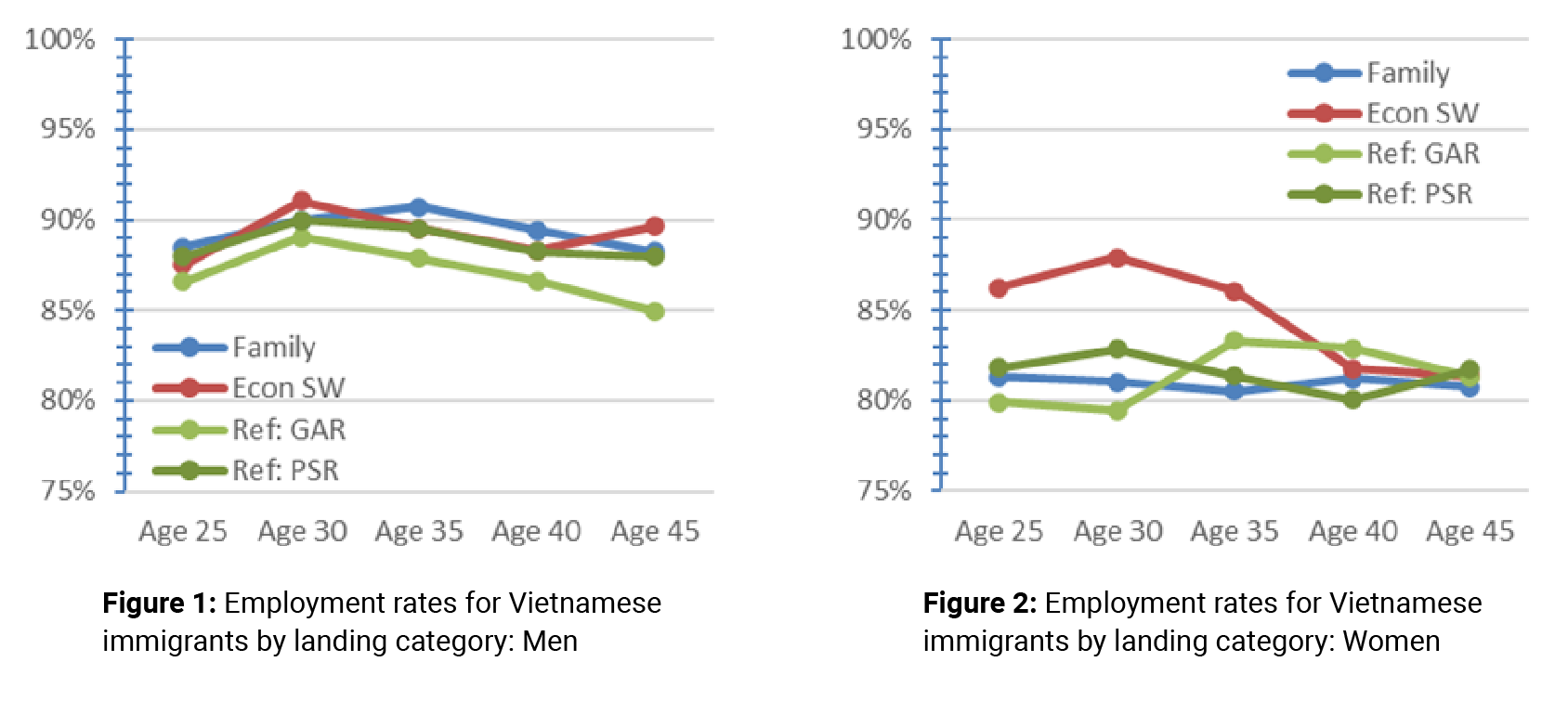
Figures 3 & 4: Employment rates for Polish immigrants by landing category: Men and Women
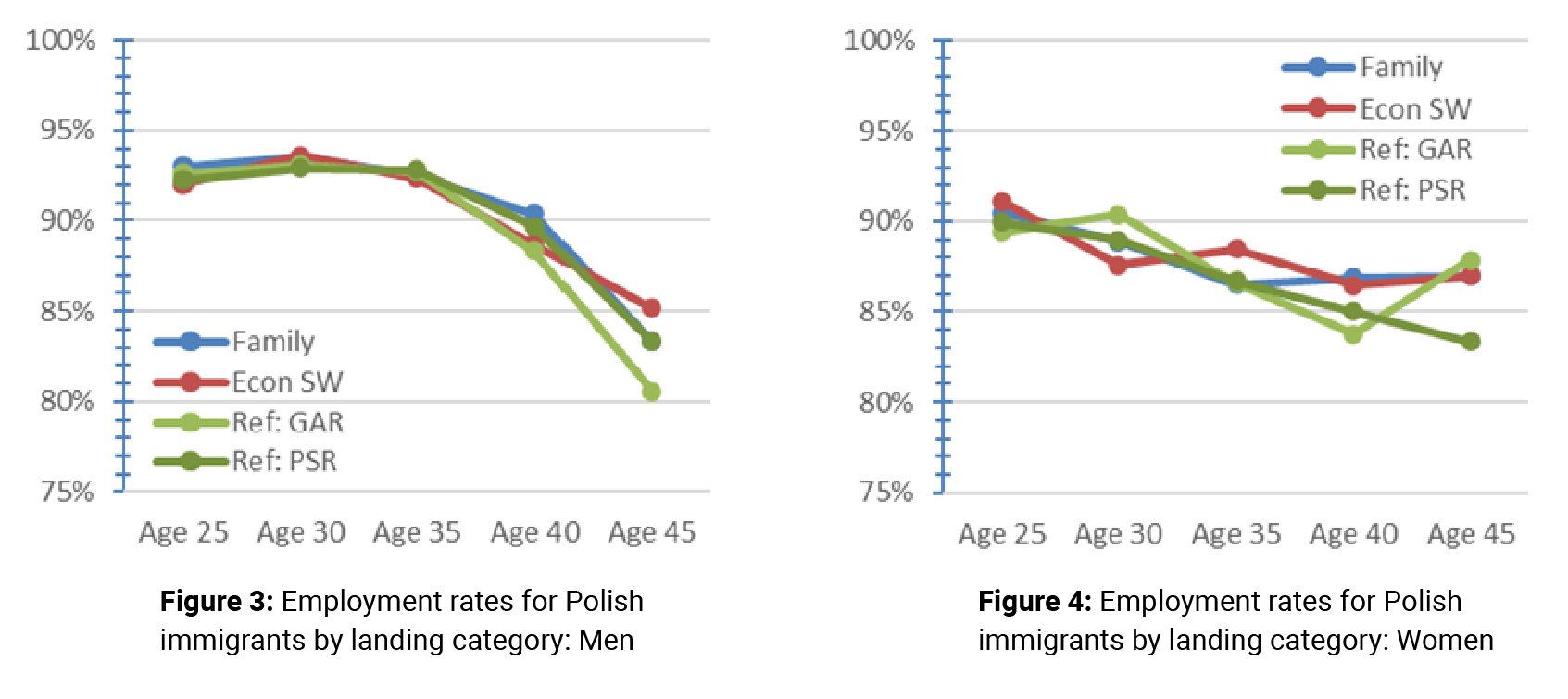
Figures 5-6: Mean employment incomes for Vietnamese immigrants by landing category: Men and Women
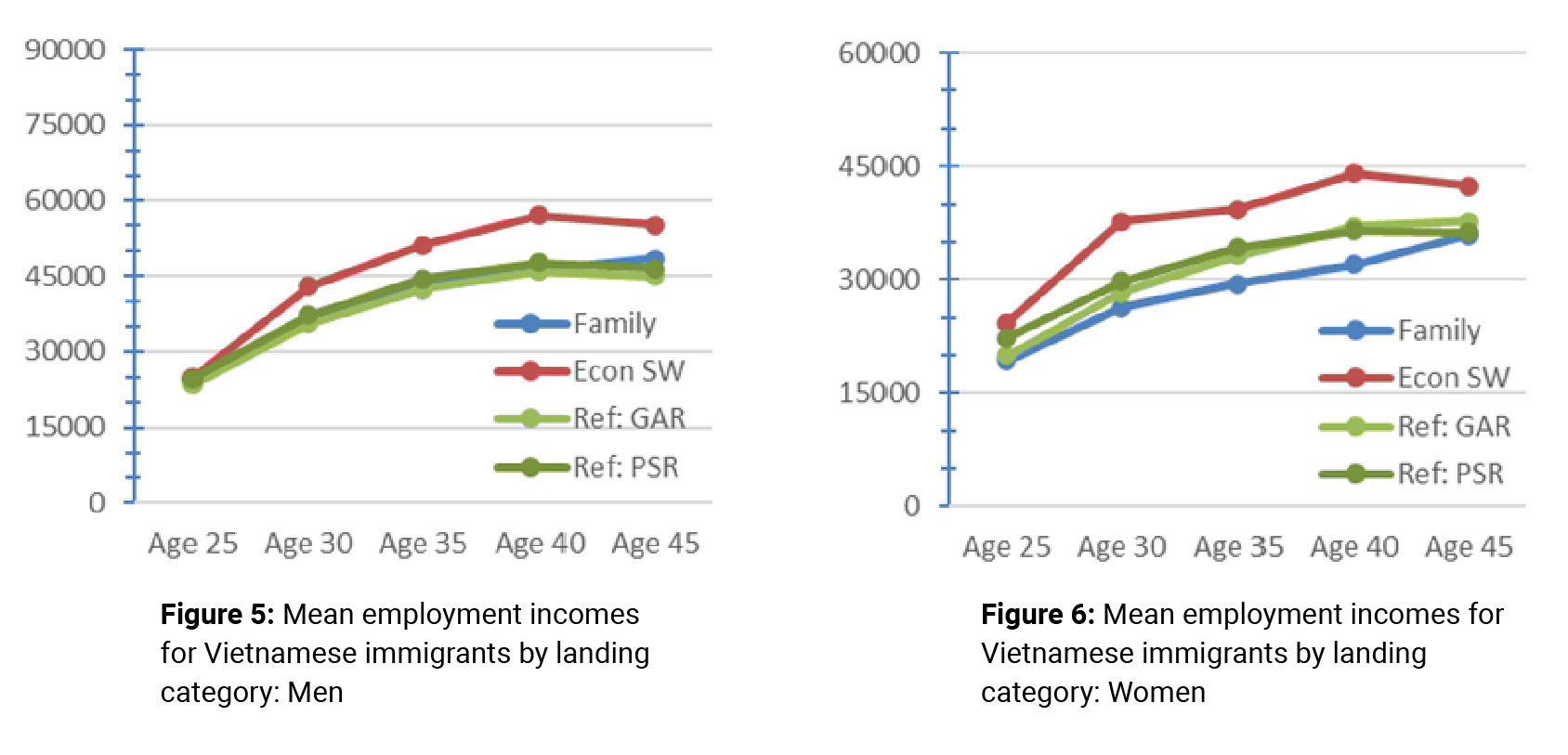
Figures 7-8: Mean employment incomes for Polish immigrants by landing category: Men and Women
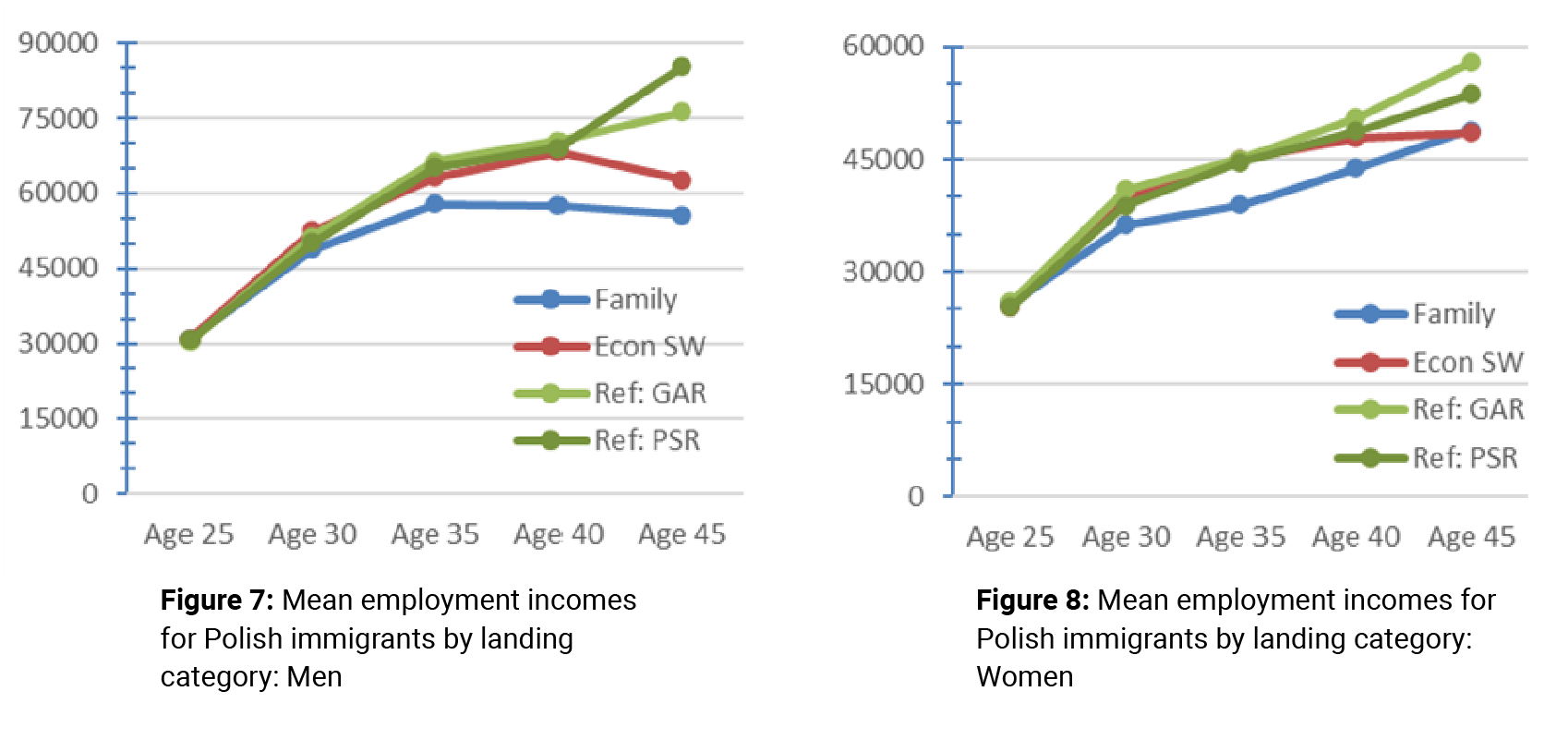
Figures 9 & 10: Mean employment incomes for Vietnamese and Polish immigrants by landing category
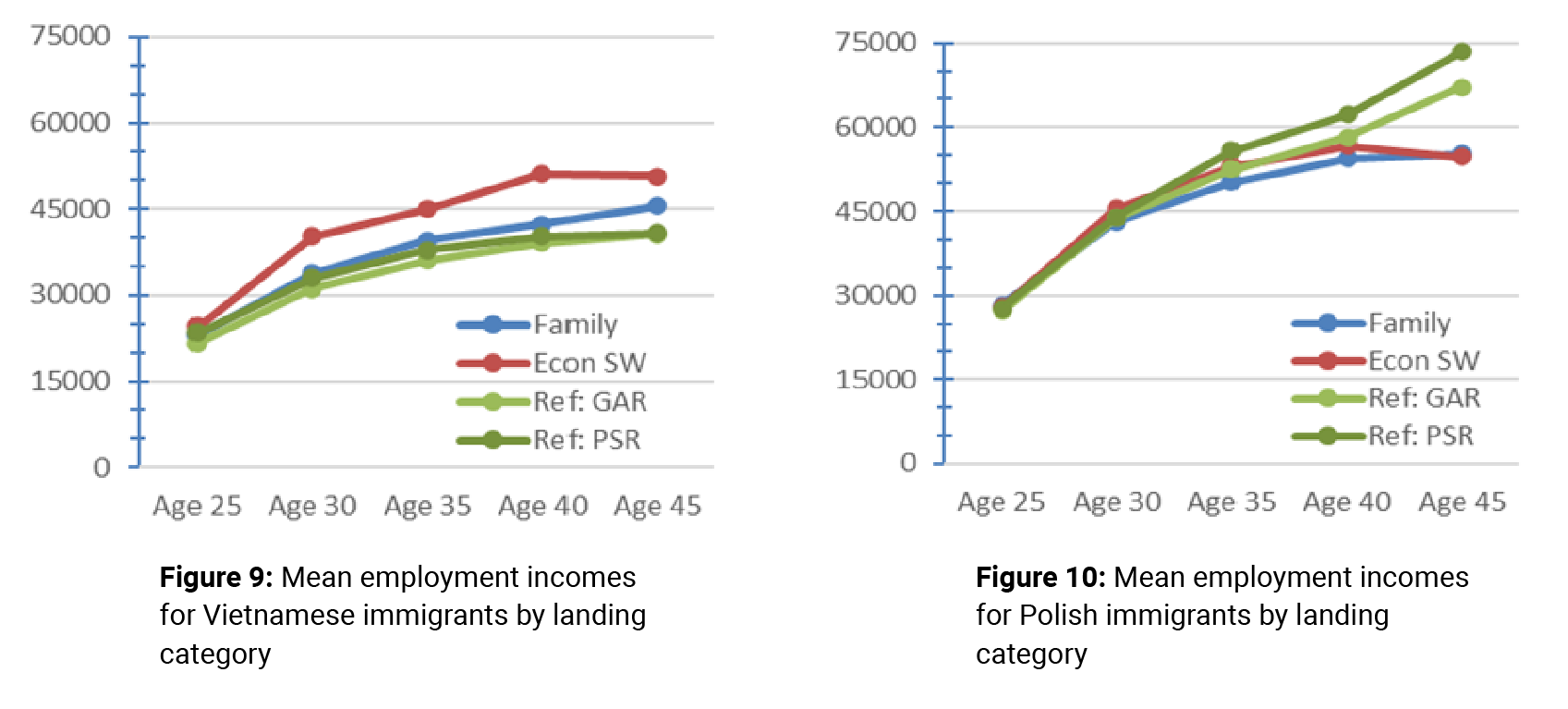
Explore more projects
